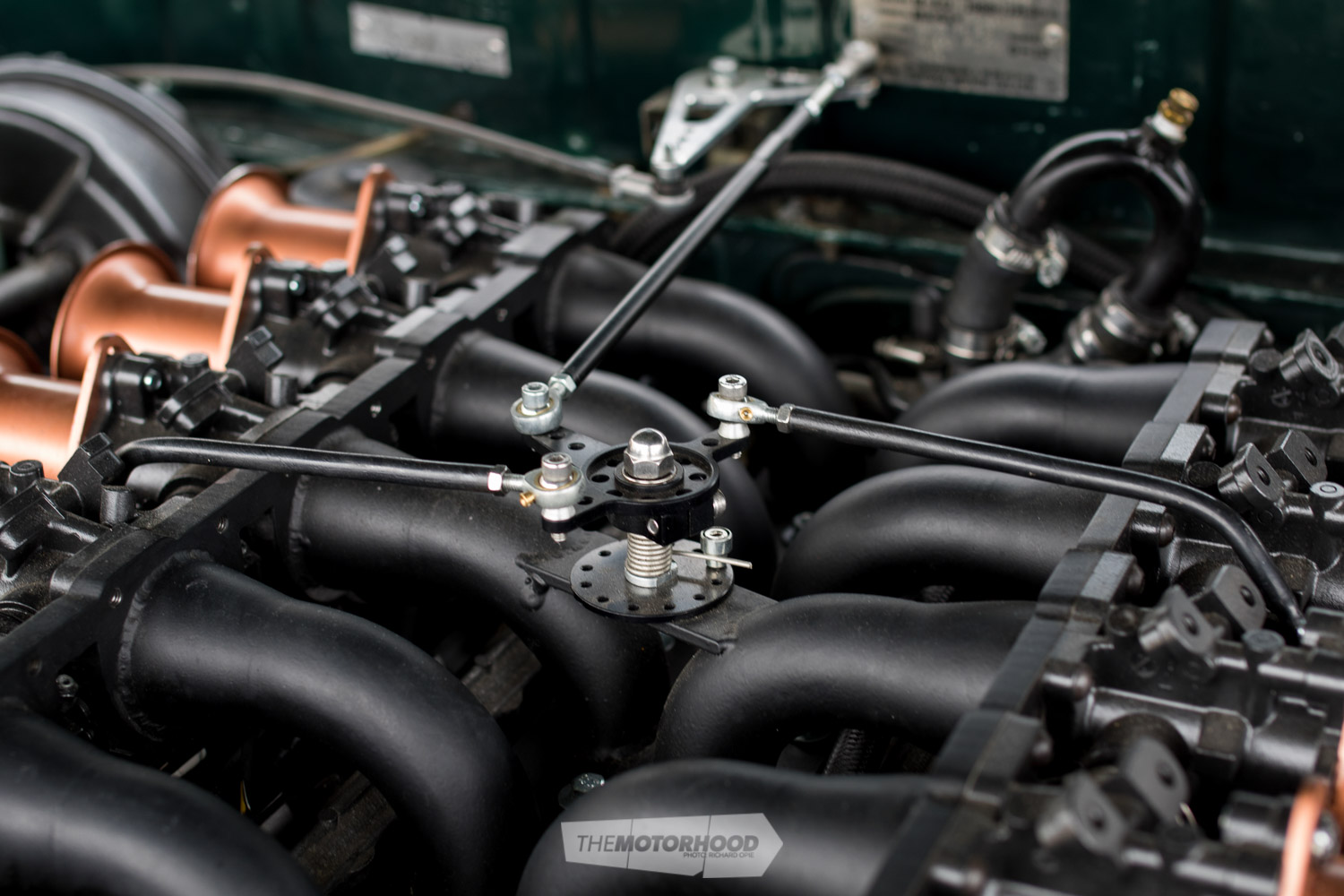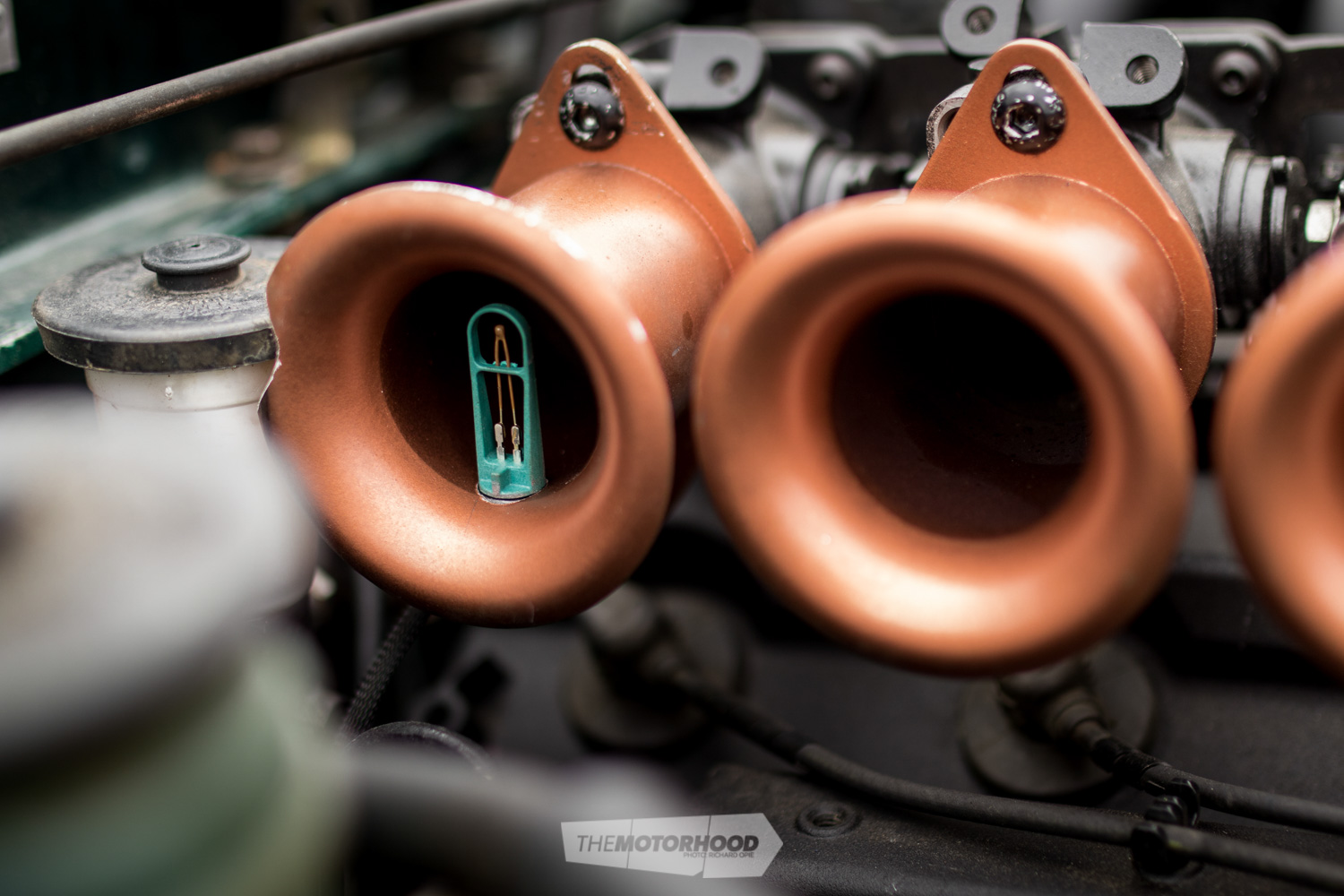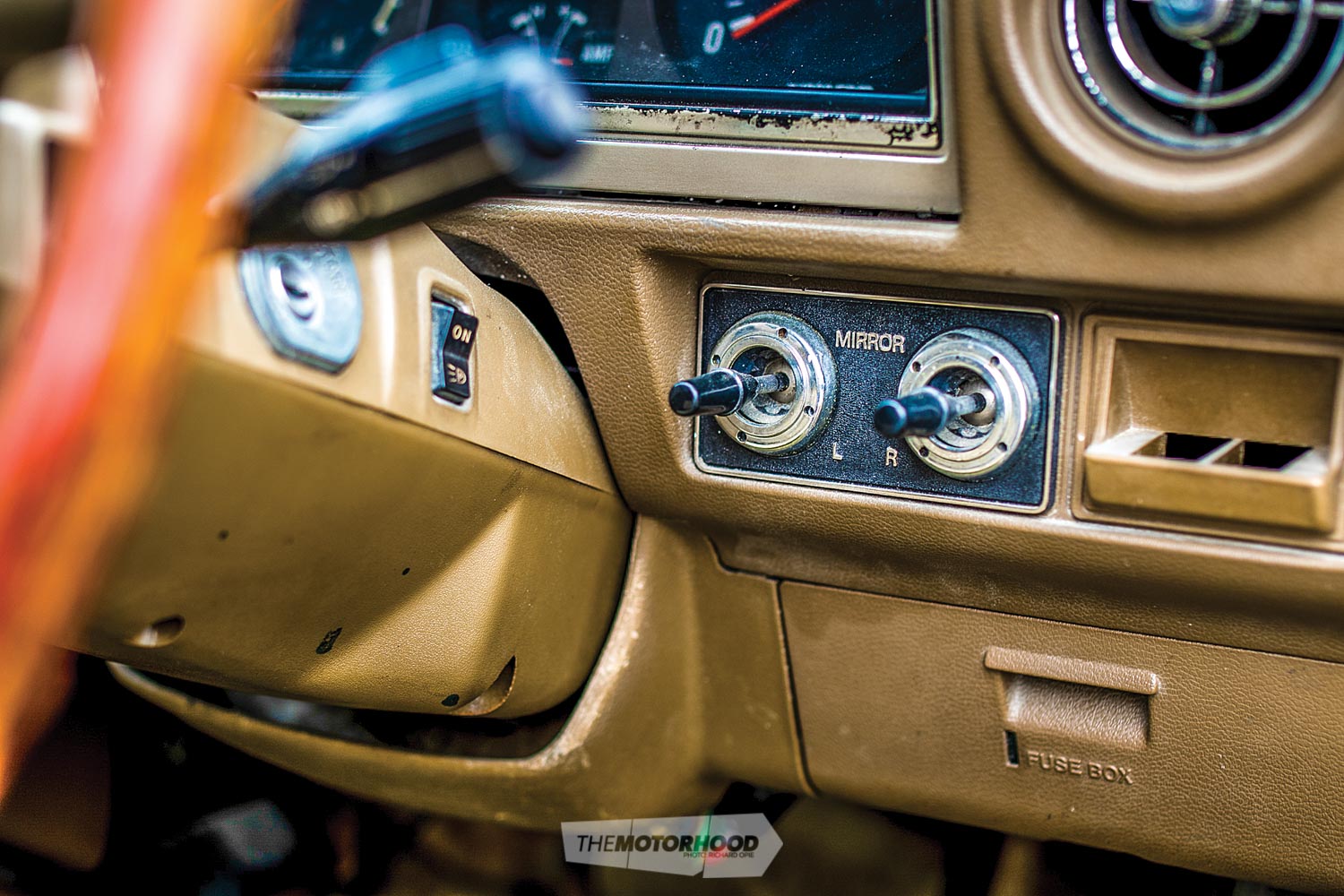Can it really get much better than 12 cylinders and one hell of an induction set-up squeezed into some classic Toyota steel? if the waves Nathan’s MX41 has been making around the world are anything to go by, then it’s a resounding no

Nestled away in the sweeping plains of the East Coast region of Hawke’s Bay, which is better known for its award-winning wine than its cars, lives a creation smoother, bolder, and much more elegant than any drop you’ll pick up off the shelf down at the local bottle shop. To create such an artwork meant the blending of two of Toyota’s finest creations – the heart of the ultimate in Japanese luxury, and the rarest sub-model in Toyota’s X-chassis family.
What we’re talking about, of course, is the creation of Nathan Messenger’s Mark II. A carpet layer by trade, Nathan has always had a love of all things low slung, fast, and loud, and, after selling his previous 1UZ-powered RX30 to free up some cash, he knew exactly what chassis he wanted next. Setting his sights on a ’79 Toyota Corona Mark II (MX41), Nathan tracked this particular example down in the ownership of Rupz ‘SKOOLN’ Parbhu, who was storing it away as a parts car. Expectedly, it was a touch worse for wear after being used as a storage and seating area in the garage, so Nathan set about restoring it back to its former glory as a clean, running and driving cruiser. “I always wanted an MX41, because they are so hard to find. It’s the unicorn of the shape; so, when I found out Rupz had a spare one, I had to grab it off him,” Nathan said.
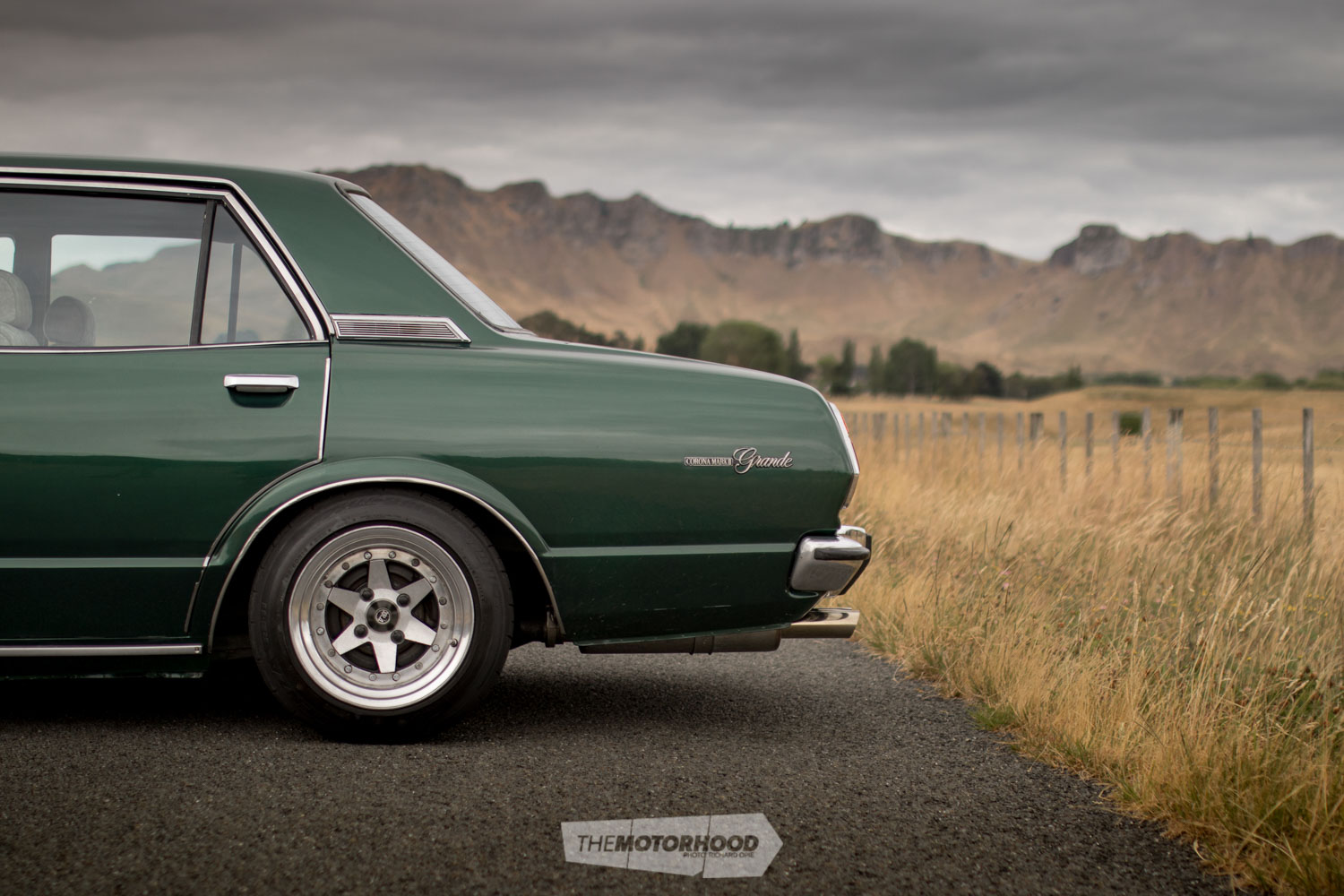
Once the body had received the much-needed love necessary to get it straight again, friend Wayne was employed to lay down the luscious coats of factory green before applying a dusting of gold Xirallic for extra pop. After that, the fun could begin. Nathan had always intended to swap out the factory engine that the car had arrived with, in favour of something ‘bent’, although, initially, it was meant to be a 3UZ.
Researching such a package on Japanese auction sites, Nathan discovered two things: first, the 3UZ had a very similar price to that of the 1GZ-FE found inside the Toyota Century — the luxury limousine line targeted towards CEOs and other well-to-do executives — and, second, that no one had done a hell of a lot with these — either here or overseas. What’s a ‘1GZ-whatchamacallit’, you might be asking? It’s nothing short of 12 cylinders in V-configuration and packs a buttload of torque. Nathan’s wife must have taken notice of his feelings towards landing one, as one promptly arrived at the door as a present for their wedding anniversary — now that’s how you give a gift, people!
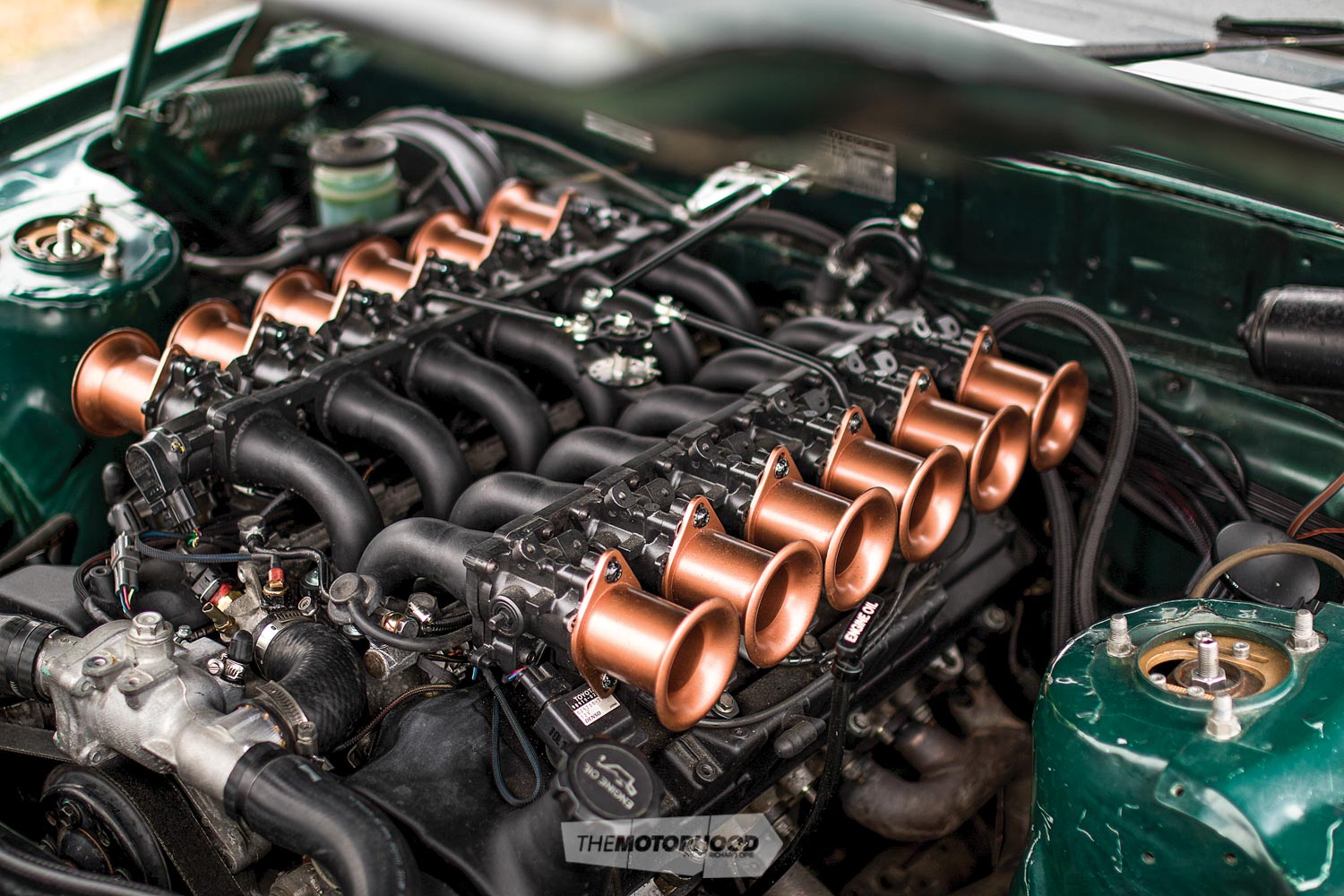
Being an ’01 model, the V12 was a far-sight newer than the ’79’s classic body lines, and Nathan wanted to keep the balance between the new and old schools even. “I got all the factory intake bits powder-coated and tried to make it look less ‘new’, but it didn’t suit the car at all,” he told us, continuing, “we also had issues with the dual fly-by-wire accelerator. At the time, no computer within the budget was capable of running it; we would have had to purchase a Haltech and adaptor box, so we decided that a mechanical linkage would be used.
“At the same time, it was pointed out that the old ’60s and ’70’s Ferraris didn’t have the exotic high-pitched sound that people associate with V12s; they had a deep, 12-valve carby, open-induction sound, which got me thinking.” Nathan decided the fly-by-wire issue could be solved through the use of the mechanical linkages found on individual throttle bodies (ITBs), and, with his interests already piqued by that comparison to the old greats, it only took one summer’s day, a couple of brews, and a chat with his neighbour, ‘fatty’, before he was circling Hawke’s Bay to pick up four sets of silvertop 4A-GE ITB units.
“At the same time, it was pointed out that the old ’60s and ’70’s Ferraris didn’t have the exotic high-pitched sound that people associate with V12s; they had a deep, 12-valve carby, open-induction sound.”
With all 12 throttle bodies in hand, Nathan along with fatty set about designing their own manifold to make it all work. “Toyota had done it with four, so it was just a matter of thinking, if they [had] made a six, what would they have done? We sat there and stared at them for a bit, measured the inlet-port distances, and lined the throttle bodies up — which turns out [that], side by side, they are almost an exact match, easily within a one-millimetre tolerance,” he said.
To avoid running stacks out of the bonnet, so as to keep the sleeper appearance, which would ironically be given away by this exact undertaking, Nathan knew that the runner length was always going to be long, so opted to run them up and over each side, finishing parallel to the edge of the rocker covers for a symmetrical look. The bottom plate was CNC-cut to suit the 38-millimetre inlet ports and the runners are a simple 38-millimetre 90-degree bend using a reducer to expand the pipework to 50mm to allow the 45-millimetre throttle bodies to pump air smoothly. “I’ve been asked why I didn’t run the blacktop 20-[valve] throttle bodies instead, and it came down to matching the size of the cylinder chambers in the V12 to the 4A-GE, which are almost identical,” Nathan said. “I also looked into using two RB26 sets, but the 4A-GE matched up so much better, and it kept the parts within the family.”

Internally unopened and practically unknown in terms of history, he never expected huge figures from the combination, mentioning that he would have been happy with it only making the 231kW it was offered with standard. But, after Graham at WRC Developments had a bit of a toy around to set the Link G4+ Storm in motion, the end result was a very respectable 274kW and 457Nm. Interestingly enough, the torque figure is a drop from the 481Nm produced inside the Century, which Nathan puts down to the intake change, saying, “The stock intake is so long, it’s often referred to as ‘snakes and ladders’, as it goes up and out of the head, across and back, loops over itself, back forwards and around. In short, it’s very long. Then an internal butterfly makes the chambers even larger, producing 400Nm from 1200rpm in order to pull around the big, heavy limos.” Inside the 1100-kilogram body, what the 1GZ is producing torque-wise is no doubt more than enough to make things hairy when the loud pedal gets stomped on.
Packing an induction as gnarly as this, the note it produces is the centre point of the entire build. Nathan said that most who have asked to hear it imagine the raspy, crisp sound of a late-model supercar and almost instantaneously grab their chest when the car is revved, as the 12 ITBs suck oxygen with enough force to send vibrations through the air — described as being very unlike the tinny Honda-style twang and more a deep ‘dort-dort’ rumble. There are a few videos floating around of test runs, yet these simply do it no justice — it’s one of those things that needs to be heard and felt for yourself.
Sitting on SSR Longchamps, Nathan originally built the set for his RX30. Starting life as 14×6.5-inch examples, built to fit the guards, measuring in at 14×8 and 14×8.5 inches, they were sold with the car. He later bought them back for a steal — retaining the original Potenza rubber — after the new owner didn’t like the look

The car was driven to Leadfoot, a 900-kilometre round trip for which Nathan admits he joined the AA — just in case — but the car took it like a champ, and he plans to head north again for the Toyota Festival at Hampton Downs in April. So, if you want to see the perfect mix of old and new schools, with the world’s only ITB-equipped 1GZ, it’ll be the place to be.

Nathan Messenger
Age: 33
Location: Hastings
Occupation: Carpet layer
Thanks: Huge thanks to Craig ‘Fatty’ Smith — this build wouldn’t be where it is now without his experience and help; my wife, Amie, for buying me the engine as a surprise 10-year wedding-anniversary gift and for being so laid-back for the next 18-months during the build; my kids, Zak, Lockie, and Sadie, for not being monkeys while I was in the shed; Wayne, for all the long nights he put into the prep and paint; and the mates who were always there to lend a hand: Jord, Dan, and Liam; and also to John, for welding up the manifold
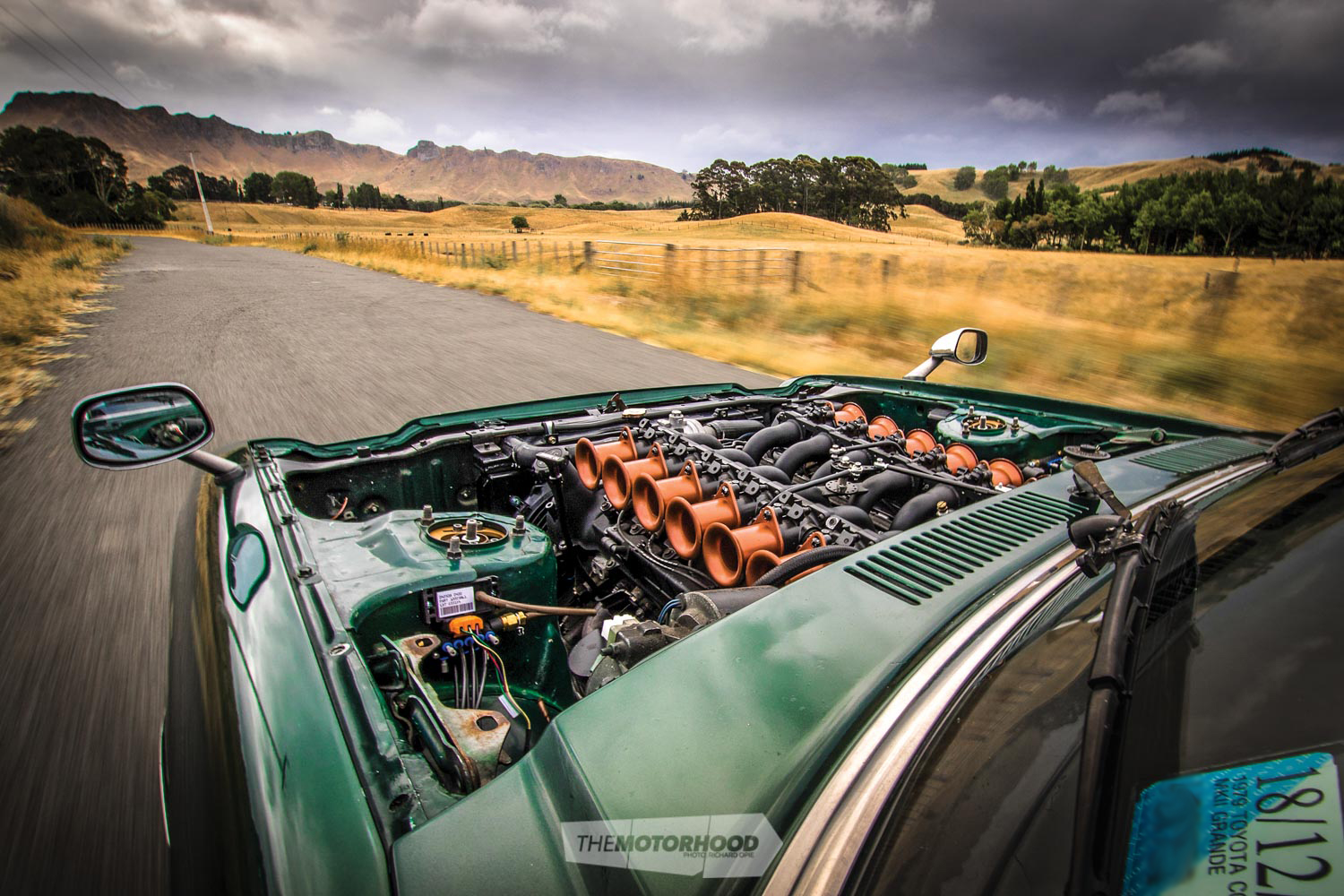
Heart
ENGINE: Toyota 1GZ-FE, 4996cc, 12-cylinder
BLOCK: Factory
HEAD: Quad-cam VVT-i
INTAKE: Custom intake manifold, 12 silvertop 4A-GE ITBs, intake trumpets, custom bell crank and linkages
EXHAUST: Twin 2.5-inch mild-steel system, twin Adrenalin R resonators Adrenalin R rear muffler
FUEL: DeatschWerks primary fuel pump, Holden Commodore lift pump
IGNITION: Factory wasted-spark
ECU: Link G4+ Storm
COOLING: Fenix Performance radiator, twin electric fans
EXTRA: Wired by Revolution Electrical
Driveline
GEARBOX: Five-speed R154, custom bellhousing
CLUTCH: 10-inch Toyota 1UZ
FLYWHEEL: 10-inch Toyota 1UZ
DIFF: F-series 7.5-inch housing, Altezza 3.7-ratio LSD centre, ’04 Hilux crown wheel
Support
STRUTS: (F) BC Red coilovers, Cusco S13 adjustable top hats; (R) BC shocks, lowering springs
BRAKES: (F) GX61 calipers, vented rotors; (R) factory
Shoes
WHEELS: (F) 14×8-inch SSR Longchamp XR4, (R) 14×8.5-inch SSR Longchamp XR4
TYRES: 185/60R14 Potenza RE-11
Exterior
PAINT: Resprayed factory green with gold Xirallic
Interior
SEATS: Factory
STEERING WHEEL: Factory
INSTRUMENTATION: Factory
Performance
POWER: 274kW
TORQUE: 457Nm
FUEL TYPE: 98 octane
TUNER: Graham at WRC Developments







